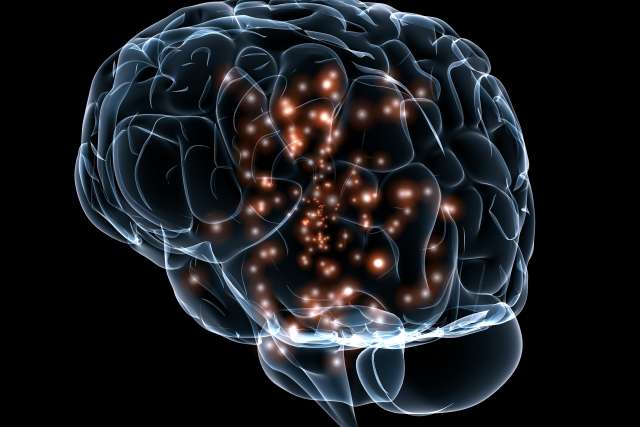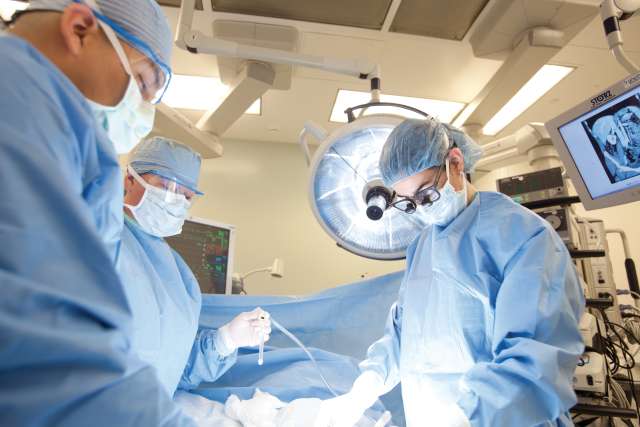When Mai Yamakawa, MD, downloaded single-cell from brains affected by Alzheimer’s disease, she and her colleagues began an intense search for a specific immune cell: the .
Previous research on mouse models and human spinal fluid hinted that they would find it. But parsing through data from human brain tissue required much more sophisticated and time-intensive analysis.
Nearly a year later, they found that of the 1.2 million cells in the dataset, a mere 800 were T cells, with the CD8 subclass most abundant. These effector memory cells contribute to inflammation by killing target cells and modulating the immune response.
“It’s a needle in a haystack but we proved that it's there,” said Dr. Yamakawa, a clinical instructor in neurology at the David Geffen School of Medicine at UCLA. “The immune system is one of the most diverse systems between individuals. But we were able to capture a signature [of the disease] from 70 different people.”
Dr. Yamakawa and principal investigator Jessica Rexach, MD, PhD, showed for the first time that CD8 T cells were consistently elevated in human brains with Alzheimer’s disease, as well as characterizing some of their interactions with microglia, the brain’s resident immune cells.
The findings further refine the molecular landscape of and point to the important role of neuroinflammation in disease progression.
Their “Cell States and Interactions of CD8 T Cells and Disease-Enriched Microglia in Human Brains with Alzheimer’s Disease” was published in the journal in January.
“[CD8 T] cells are not a very abundant cell type in the brain, but they're one of considerable interest,” said Dr. Rexach, an assistant professor in neurology and the division of neurogenetics at DGSOM. “When you look at the animal model work, there's actually a bit of controversy about whether these cells are providing a beneficial role [or] whether they're providing a deleterious role.”
For example, a last year examined intercellular communication between microglia and CD8 T cells, and found that the T cells protected mouse brains from neuroinflammation and cognitive decline.
“There's a lot of enthusiasm in the field about thinking about these cells as an important drug target,” said Dr. Rexach. “This is a very strong, emerging drug target on the heels of immunotherapies that have been revolutionizing chronic disease treatments,”
The role of T cells in AD
The Alzheimer’s brain is characterized by including plaques and tangles. In the former, beta amyloid proteins clump into cell-disrupting plaques between neurons. Tangles manifest much later in disease progression when tau proteins accumulate within neurons.
There is no cure for Alzheimer’s disease, but treatments for some elements of the disease have greatly advanced. Last year, the FDA approved as a treatment for early Alzheimer’s patients. The I.V.-infused therapy delivers antibodies that target beta amyloid proteins to break down plaques.
Yet much less is known about the precise roles of immune responses in the disease, though there has been a steady, but slow, progression of research. Even in 1910, Alois Alzheimer found glial cells (which include microglia, the brain’s immune cells) plaques in post-mortem tissue.
In the quest for treatments, much more needs to be understood about the role of immune cells such as T cells in disease, and their interactions with microglia. Dr. Yamakawa used very sensitive techniques to separate out cell signaling pathways and found two possibilities.
“I think [T cells] could be actually inflammatory or toxic to the [brain] tissue, or it could be reactive to the neurodegeneration or neuronal death,” said Dr. Yamakawa. “Right now, because we're looking at the cross-sectional data on the post-mortem brain, we can't tell which one’s first.”
The researchers found much more T cell interaction and signaling with microglia associated with plaques.
“So that was very surprising to me,” said Dr. Rexach. “And it left me thinking about dual roles or potentially multiple roles of [T cells]. Could they be having an important surveillance role? Could there be some shifts in how it's responding or interacting with the amyloid?”
They also looked more closely at patients in the dataset carrying the – which increases Alzheimer’s disease risk – and found that amyloid-responsive microglia were depleted, pointing to its likely beneficial role in a normal brain. However, when dividing the dataset and looking only at carriers of the gene, there were not enough T cells present to gauge their response.
“There’s a dramatic change in the neuroinflammatory landscape of the brain in the APOE-4 carriers, including some of the major cells interacting with T cells,” said Dr. Rexach.
But further study stresses the current limitations of data analysis and bioinformatics in gleaning more information from these large human brain single-cell datasets, requiring a stronger bridge between biology and data analysis, she said.
“The way that the bioinformatics field goes is that you first use it till you get your hands dirty, and then you realize, after you've gotten your hands dirty, what's missing,” said Dr. Rexach.
“There are key next steps in the work that require new ways of doing things. In this environment of UCLA, where there's geneticists and statisticians and people who are in tool development, we're getting excited about new collaborations.”
The researchers are now brainstorming with potential collaborators to apply for a grant. Dr. Yamakawa estimates at least a year to develop more complex analyses.
Future tech
Any new programs must be able to probe an enormous amount of data, and AI may have a role to play.
Using AI to analyze single-cell sequencing data is an “ongoing hot topic,” Dr. Yamakawa noted. "There are already several analytical platforms that incorporate machine learning.”
But generative AI (such as ChatGPT) requires a few cautions.
“Substantial benchmarking needs to be done before we actually apply it,” said Dr. Yamakawa. “The output is unstable and affected by prior knowledge. I think we are in a position to provide reliable primary knowledge for generative AI.”
For now, Dr. Yamakawa and Dr. Rexach are working with smaller datasets and applying the methods from this study to other neurodegenerative diseases where the immune system component might be even stronger than in Alzheimer’s. Dr. Yamakawa has received a to focus on amyotrophic lateral sclerosis () and frontotemporal dementia ().
“There is so much variability within the patient's clinical presentation that I have no clue what the biological explanations are,” she said. “And it's really important to fill the gap between the clinical finding and what could be informed by the lab.”
As physician-scientists, both researchers feel their bottom line is the patient.
“We're not here just ringing the bell,” said Dr. Rexach. “We would want to think about setting up a drug program, or we would want to think about a clinical decision someday.
“What we need is to get this work to the level where we can be confident to use all of it. And I think we've done a really good job with what we have – but more tools are necessary to push that even further.”





